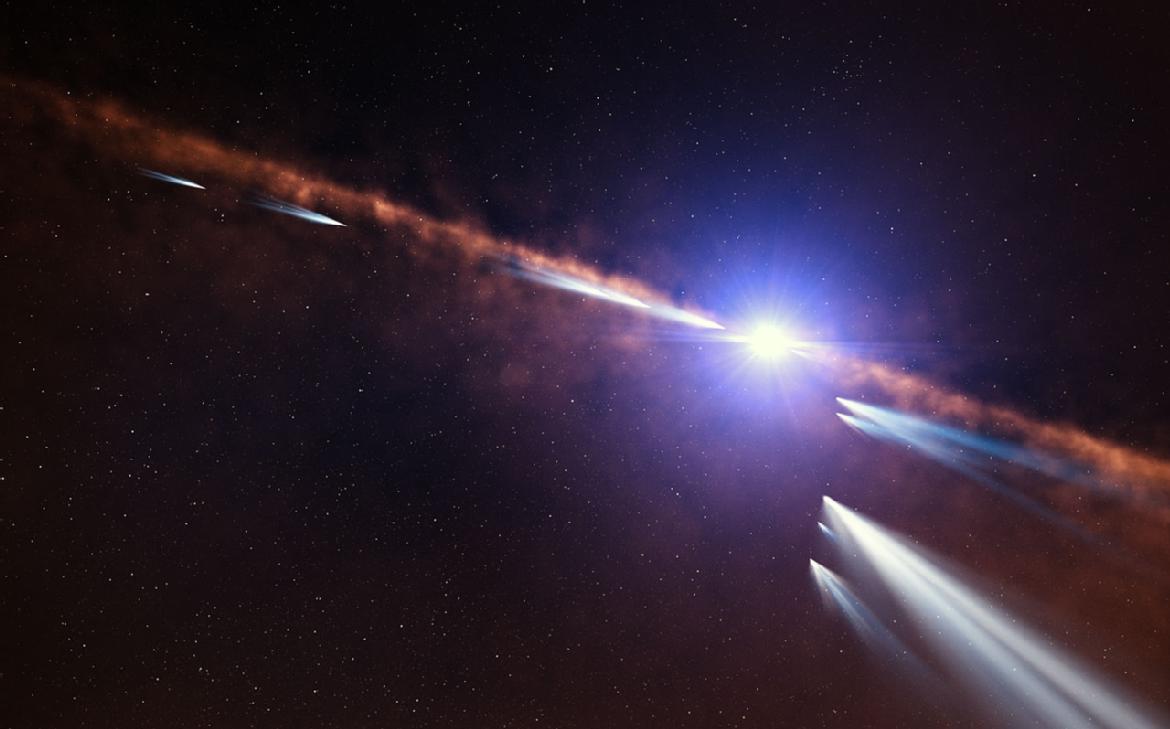PhD Opportunities
Unusual transit observations with PLATO
Supervisor: Dr Paul StrømLink opens in a new windowLink opens in a new window
Anticipated start date: October 2023
The application deadline has now passed. Thank you for your interest!
Overview
This project will explore ways of efficiently detecting and characterising unusual transit signatures by simulating and analysing the type of data we expect to obtain from the upcoming European Space Agency space mission: PLATOLink opens in a new window.
In and amongst the starts which regularly dim every time an exoplanet transits, astronomers sometimes come across irregular dimming events caused by material passing in front of the host star. The irregular dimming events, which can last for days and months and which sometimes block out a significant fraction of the star light are referred to as "dipper stars". Although it is clear that the dimming events are caused by some transiting material, the details surrounding the what is causing the dimming remain uncertain.
 This figure shows irregular transit dipping events observed with the Kepler telescope of the star EPIC 205718330. Figure from Ansdell et al. (2019)Link opens in a new window
This figure shows irregular transit dipping events observed with the Kepler telescope of the star EPIC 205718330. Figure from Ansdell et al. (2019)Link opens in a new window
There are many possible mechanisms which may be causing the dimming events. Most of them suggest it is related to the circumstellar environment (e.g. warped inner disk) or transiting circumtstellar material. There has also been suggestions that the dimming events are being caused by ringed planets as well as exocomets*.
The PLATO exoplanet mission, which is due to launch at the end of 2026 will provide outstanding photometric variability observations which will allow us to study the changes in flux of hundred of thousands of stars. This will be immensely useful for studying the enigma of irregular transits given that the mission will conduct wide field, long duration observations at a very high photometric precision.
Focus of the PhD
The details of the PhD will depend on the interests and the skill set of the successful candidate. It is envisioned that the PhD will be focussed on studying the characteristics of unusual transits and then to use this gained insight into how to best detect and characterise them. For instance, one possible avenue of research could be to develop an efficient method for detecting exocomets absorption signatures in photometric data. This could involve injecting exocometary transits with known parameters into simulated PLATO data and then develop methods to retrieve these detections. Once they have been detected they could be modelled to get information such as absorption depth and come size and then compared to what was injected. For papers on similar topics please have a look at Lecevelier des Etangs (2022) and Kennedy et al. (2019).
The PhD will likely have a strong exocomet component (see text on exocomets below). Most of the work will be done using python, so it is preferable if you have some experience using it.
 Credit: ESO/L. Calçada
Credit: ESO/L. Calçada
Additional information about exocomets
* Exocomets are small icy bodies, which orbit stars other than the Sun and sublimate when close to their star, producing a tail of dust and gas (like solar system comets). During transit, the gas causes spectroscopic absorption signatures that are routinely detected in several systems.
The comets in our own solar system carry the physical and chemical memory from their formation environment. Unlike asteroids, comets have generally not been subject to space-weathering and therefore are regarded as the unused building blocks of the Solar System, providing astronomers with pristine samples of the formation and evolution conditions of the early Solar System.
Much is to be gained by studying their composition, origin and dynamical history, as they provide important clues to the formation of life on Earth through the delivery of complex organic molecules and large quantities of water which may have laid the seeds of early organic chemistry on Earth.
Young stellar systems, some of them many light years away, resemble the early Solar System by showing the hallmarks of being surrounded by a vast number of comets that we are now able to detect. These comets, orbiting other stars, give us the important foundation for which to make a comparison with the comets in our Solar System and allow us put their composition and dynamical distribution in perspective. Exocomets provide us with information valuable for understanding the composition of exoplanet atmospheres and may help us understand the early chemistry of Earth.
Got any questions?
If you wish to know more or have questions then please do not hesitate to contact me directly. I am passionate about science and am interested in discussing with you how the project might match your interests and skill set.
Please note that you will have to apply for the PhD. This page has a step by step guide on how to do it.
About the
Warwick Astro Group
Warwick is an internationally recognised centre of excellence in researchLink opens in a new window. Our group is involved in many major ground and space-based projects, including the Sloan Digital Sky Survey, ESA's CHEOPS satellite and upcoming PLATO mission, the Next Generation Transit Survey (NGTS), and the Gravitational-wave Optical Transient Observer (GOTO).
Both the Physics Department and the University of Warwick hold Athena SWAN Silver awards, a national initiative to promote gender equality for all staff and students. We strongly value equity, diversity and inclusion, and encourage applications from all under-represented groups.
